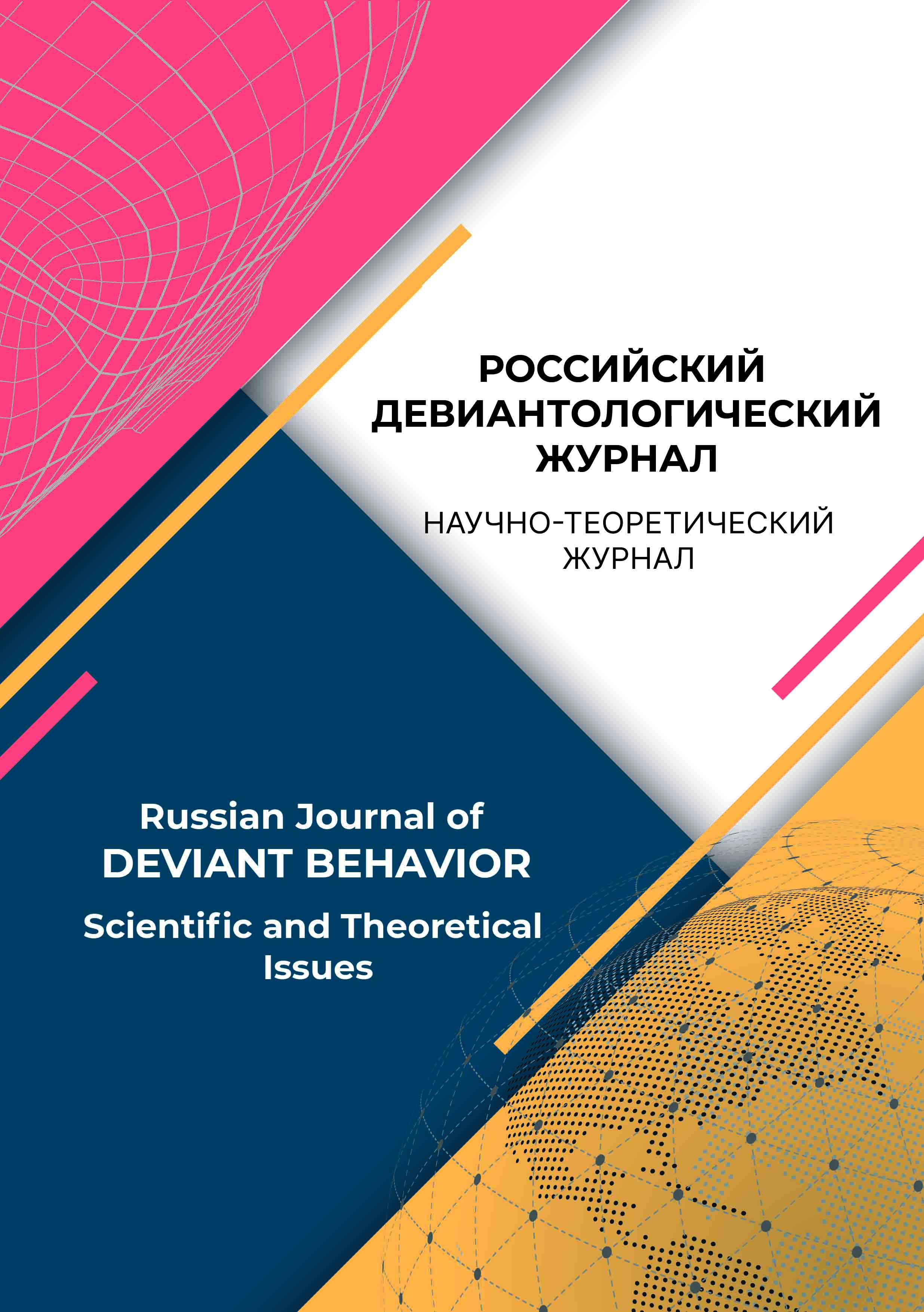США
с 01.01.2016 по настоящее время
Россия
УДК 36 Обеспечение духовных и материальных потребност. Соц. обесп. Соц. помощь. Обесп. жилищем. Страхование
Целью данной статьи является изучение современного подхода к профилактике суицида в школе. В статье анализируются статистические данные, важность и значимость изучаемой проблемы, рассматриваются причины суицида, факторы суицидального риска и меры по предотвращению суицидального поведения. Авторы подчеркивают особую роль школы в предотвращении самоубийств, дают информацию для учителей, администрации школы и школьных психологов, касающуюся данного вопроса, описывают актуальные для школы инструменты и программы, направленные не только на предотвращение суицидального поведения, но и на минимизацию возможного риска возникновения суицидальных намерений в будущем.
суицид, профилактическая работа школы, школьный психолог, подростки, факторы риска
1. Ambrumova, A. G. (1983). Suicide as a phenomenon of socio-psychological maladjustment of personality. Actual problems of suicidology, 82, 6-28.
2. Arseneault, L., Bowes, L., Shakoor, S. (2010). Bullying victimization in youths and mental health problems: ‘much ado about nothing’? Psychological medicine, 40(5), 717-729.
3. Breux, P., Boccio, D. E. (2019). Improving Schools’ Readiness for Involvement in Suicide Prevention: An Evaluation of the Creating Suicide Safety in Schools (CSSS) Workshop. International journal of environmental research and public health, 16(12), 2165.
4. Centers for Disease Control and Prevention. (2019). Suicide Facts at a Glance. Retrieved from www.cdc.gov/ violenceprevention/pdf/suicide-datasheet-a.pdf.
5. Cha, C., Franz, P., Guzman, E., Glenn, C., Kleiman, E., Nock, M. (2018). Annual Research Review: Suicide among youth - epidemiology, (potential) etiology, and treatment. Journal of Child Psychology and Psychiatry, 59(4), 460-482. doi: 10.111/jcpp.12831
6. Davis Molock, S., Heekin, J. M. et al. (2014). The baby or the bath water? Lessons learned from the National Action Alliance for Suicide Prevention Research Prioritization Task Force literature review. American journal of preventive medicine, 47(3 Suppl 2), 115-121.
7. Durkheim, E. (1897). Suicide: a study in sociology. New York: Free Press.
8. Dushkin, A. S., Geyzhan, N. F., Dushkina, E. V. (2021) Prevention of antisocial behavior of minors in the process of interaction between a social worker and employees of the internal affairs bodies. Questions of pedagogy, (2-1), 46-49.
9. Dushkin, A. S., Goncharova, N. A., Dushkina, E. V. (2021) On the organization of psychoprophylactic work with minors who are registered in the departments for juvenile affairs of the internal affairs bodies. Modern Science, (2-1), 356-360.
10. Erbacher, T. A., Singer, J. B., Poland, S. (2015). School Liability and Implications for Best Practice. Suicide in schools: A practitioner’s guide to multi-level prevention, assessment, intervention, and postvention (50-72). New York: Routledge, Taylor & Francis Group.
11. Fazel, M., Hoagwood, K., Stephan, S., Ford, T. (2014) Mental health interventions in schools 1: Mental health interventions in schools in high-income countries. Lancet Psychiatry, (1), 377-387.
12. Fountoulakis, K. N., Chatzikosta, I., Pastiadis, K., Zanis, P., Kawohl, W., et al. 2016. Relationship of suicide rates with climate and economic variables in Europe during 2000-2012. Ann General Psychiatry, (15), 19.
13. Hay, C., Meldrum, R. C., Mann, K. (2010). Traditional Bullying, Cyber Bullying, and Deviance: A General Strain Theory Approach. Journal of Contemporary Criminal Justice, (26), 130-147.
14. Jiao, Y, Phillips, M. R, Sheng, Y, Wu, G, Li X, Xiong, W, et al. (2014). Cross-sectional study of attitudes about suicide among psychiatrists in Shanghai. BMC Psychiatry, (14), 87.
15. Joiner, T. E. (2005). Why people die by suicide. Cambridge: Harvard University Press.
16. Kalafat, J. (2003). School approaches to youth suicide prevention. American Behav. Science, (46), 1211-1223.
17. Klonsky, E. D, May, A. M. (2015). The three-step theory (3ST): a new theory of suicide rooted in the “ideation-to-action” framework. Int Journal Cogn Therapy, (8), 114-29.
18. Nordt, C., Warnke, I., Seifritz, E., Kawohl, W. (2015). Modelling suicide and unemployment: a longitudinal analysis covering 63 countries, 2000-11. Lancet Psychiatry, (2), 239-45.
19. Nugent, A. C., Ballard, E. D., Park, L. T. et al. (2019). Research on the pathophysiology, treatment, and prevention of suicide: practical and ethical issues. BMC Psychiatry, (19), 332.
20. Rosstat. Statisitcs.(2020). https://rosstat.gov.ru
21. Sharaf, A. Y., Thompson, E. A., Walsh, E. (2009). Protective effects of self-esteem and family support on suicide risk behaviors among at-risk adolescents. Journal of Child and Adolescent Psychiatric Nursing, 22(3), 160-168.
22. Singer, J. B., Erbacher, T. A., Rosen, P. (2018). School-based suicide prevention: A framework for evidence-based practice. School Ment. Health.
23. Sinyor, M, Tse, R, Pirkis, J. (2017). Global trends in suicide epidemiology. Current Opinion Psychiatry, (30), 1-6.
24. Suicide Prevention Resource Center (SPRC). (2014). Suicide and Bullying (Issue Brief). Newton, MA: SPRC.
25. Treatment for Suicidal Ideation, Self-harm, and Suicide Attempts Among Youth. Rockville, MD: National Mental Health and Substance Use Policy Laboratory. Substance Abuse and Mental Health Services Administration, 2020
26. World Health Organization, Suicide. (2020). http://www.who.int/mediacentre/factsheets/fs398/en/














